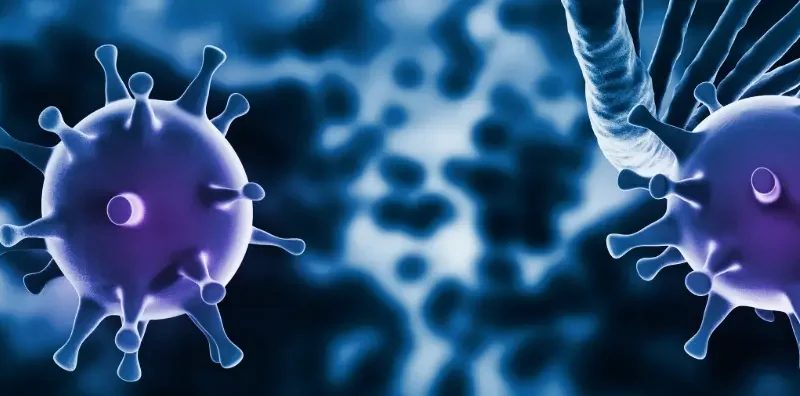The primary benefits of omega-3s come from their ability to resolve inflammation through the hormones they generate. The two omega-3s that have been the most widely studied for their clinical benefits on decreased inflammation, as well as increased resolution, are EPA (Eicosapentaenoic Acid) and DHA (Docosahexaenoic Acid). These two critical omega-3 fatty acids do a lot of different things, and as a result, the benefits of EPA and DHA are often very different. That’s why you need them both. Here you’ll learn why.
Benefits of EPA
Let’s start with eicosanoids. Eicosanoids are pro-inflammatory hormones derived from arachidonic acid (AA), an omega-6 fatty acid. These are the primary mediators of the intensity of inflammation. EPA is the most important of the omega-3 fatty acids to reduce the intensity of inflammation for several reasons.
- EPA is an inhibitor of the enzyme delta-5-desaturase (D5D) that produces AA, whereas DHA is not.
- The more EPA you have in the diet, the less AA you produce because both fatty acids compete for the same enzymes required to make eicosanoids. DHA does not compete for those enzymes. It is actually impossible to make eicosanoids (good or bad) from DHA.
- The eicosanoids derived from EPA are about ten times less inflammatory than those from AA, so the lower the AA/EPA ratio in the blood, the less inflammation is generated.
Thus, it is EPA, not DHA, that chokes off the supply of AA necessary for the production of pro-inflammatory eicosanoids (prostaglandins, thromboxanes, leukotrienes, etc.). This benefit of EPA is especially relevant for reducing the levels of leukotrienes as they are strongly associated with increased insulin resistance and activation of NF-kB, which is the master genetic switch for turning on inflammation by generating eicosanoids and cytokines.
As an additional insurance policy, EPA also competes with AA for the enzyme phospholipase A2 which is necessary to release AA from the membrane phospholipids (where virtually all AA is stored). DHA does not. The inhibition of this enzyme is the mechanism of action used by corticosteroids. If you have adequate levels of EPA to compete with AA (i.e., meaning you have a low AA/EPA ratio), you can achieve many of the benefits of corticosteroids but without their collateral side effects. That’s because if you don’t release AA from the cell membrane, you can’t make pro-inflammatory eicosanoids.
Thus, DHA has little effect on the initiation of cellular inflammation, whereas EPA can have a powerful impact.
Benefits of DHA
At this point, you might think that DHA has little use, but just the opposite is true. DHA can perform different functions better than EPA.
In my opinion, the key benefit of DHA lies in its unique spatial characteristics. The extra double bonds and the length of DHA compared to EPA means it takes up a lot more space in the membrane. Although this increase in spatial volume makes DHA a poor substrate for phospholipase A2 as well as the COX and LOX enzymes necessary to make pro-inflammatory eicosanoids, it does a great job of making membranes (especially synaptic membranes in the brain) much more fluid as the DHA sweeps out a much larger volume in the membrane than EPA.
This increase in membrane fluidity is critical for synaptic vesicles in the nerves and the retina of the eye because it allows receptors to rotate more effectively, thus increasing the transmission of signals from the surface of the membrane to the interior of the nerve cells. This effect on membrane fluidity is why DHA is a critical component of these parts of the nerves. On the other hand, the myelin membrane is essentially an insulator so that relatively little DHA is found in that part of the nerve’s membrane structure.
This constant sweeping motion of DHA also causes the breakup of lipid rafts in membranes that are a staging area for mounting the initiation of inflammation. Disruption of these rafts composed of relatively solid lipids makes it more difficult for cancer cells to continue to survive and more difficult for inflammatory cytokines to initiate the signaling responses to turn on inflammatory genes.
However, DHA appears to be more effective than EPA in stimulating the production of the hormone adiponectin in the fat cells. This increase in adiponectin is important for the reduction of insulin resistance. This benefit is potentially counterbalanced by the ability of DHA to increase both total cholesterol and LDL cholesterol levels compared to EPA although these unique spatial characteristics of DHA increase the size of LDL particles to a greater extent compared to EPA.
Finally, DHA is important in the area of omega-6 fatty acid metabolism. Whereas EPA is the inhibitor of the enzyme (D5D) that directly produces AA, DHA is an inhibitor of another key enzyme, delta-6-desaturase (D6D), that generates the first metabolite from the omega-6 fat linoleic acid known as gamma linolenic acid or GLA.
However, this is not exactly an advantage. Even though reduction of GLA will eventually decrease AA production, it also has the more immediate effect of reducing the production of the next omega-6 fatty acid metabolite known as dihomo gamma linolenic acid or DGLA. This reduction in DGLA can be a potential disaster as the few powerful anti-inflammatory eicosanoids are derived from DGLA. This is why if you use high-dose DHA instead of a balanced ratio of EPA and DHA, it may be essential to add back trace amounts of GLA to maintain sufficient levels of DGLA to continue to make anti-inflammatory eicosanoids.
Common Effects for Both EPA and DHA
Both EPA and DHA are substrates for pro-resolving hormones that turn off inflammation. These include resolvins, protectins, maresins, and a wide variety of others. The pro-resolving hormones from EPA and DHA are not only structurally different but also interact with entirely different receptors. Thus, you will need both EPA and DHA for the complete resolution of inflammation.
Another area that both EPA and DHA appear to be equally beneficial is in gene transcription activation. For example, both are equally effective in reducing triglyceride levels. This difference is probably due to the relatively equivalent activation of the gene transcription factor (PPAR-alpha) that causes the enhanced synthesis of the enzymes that oxidize fats. There is also apparently equal activation of the anti-inflammatory gene transcription factor PPAR-gamma by both EPA and DHA
Misunderstandings About EPA and DHA in the brain
The most significant misunderstanding about EPA and DHA is that DHA is vital for the brain, but EPA is not. This fallacy is based on the fact that the levels of DHA in the brain at autopsy are 250 times greater than EPA. The reason is due to both metabolic fate and kinetics. Both EPA and DHA enter into the brain at the same rates. Whereas DHA is shuttled off to long-term storage in the neural membranes, EPA is rapidly oxidized not to provide fuel for the brain, but to generate resolvins that act as the guardians of the brain to protect against inflammatory damage. The lifetime of DHA in the brain is about two years, and that of EPA is about 2 hours. This difference in kinetics explains the differences between EPA and DHA found at autopsy.
This constant generation of resolvins from EPA to control inflammation in the brain is why EPA is vastly superior for treating mood disorders such as depression compared to DHA (1,2).
Recent Research
There is a growing body of recent studies that support the use of high-dose omega-3 fatty acids in cardiovascular and neurological conditions.
Cardiovascular disease. The REDUCE-IT trial was a worldwide study with more than 8,000 subjects which demonstrated that supplementing the diet with 3.9 grams of EPA per day produced significant reductions in future cardiovascular events in patients who already had a heart attack and were already taking statins (3). The sub-group analysis of only Americans demonstrated even more significant cardiovascular benefits (4).
Fatty liver disease. This study used 2.4 grams of EPA and DHA per day and demonstrated a significant reduction in fatty liver disease, which affects more than 40 million Americans (5).
Autism. A recent case study has indicated that lowering the AA/EPA ratio using 3.6 grams of EPA and DHA can significantly improve behavior in established autism spectrum disorder (6).
Brain Trauma. A multi-center trial conducted with patients suffering from severe brain trauma receiving 16 grams of EPA and DHA per day has demonstrated significant clinical improvements (7).
Summary
EPA and DHA do different things in different parts of the body, so you need them both.
If your goal is reducing cellular inflammation, then you probably need more EPA than DHA. How much more? The most effective way to find out how much EPA and DHA you need is to test your AA/EPA ratio using a simple finger stick blood test. Using the AA/EPA ratio allows you to titrate the amount of omega-3 fatty acids, you need to optimize the constant balance between initiation and resolution of inflammation. Your first step toward reaching the Zone is taking enough omega-3 fatty acids to resolve inflammation. This is why it’s essential to test your levels of omega-3s in the blood, not merely guess how much you need.
References
- Martins JG. “EPA but not DHA appears to be responsible for the efficacy of omega-3 long-chain polyunsaturated fatty acid supplementation in depression: evidence from a meta-analysis of randomized controlled trials.” J Am Coll Nutr 28: 525-542 (2009)
- Liao Y et al. “Efficacy of omega-3 PUFAs in depression: A meta-analysis.” Transl Psychiatry 9: 190 (2019)
- Bhatt DL et al. “Cardiovascular risk reduction with icosapent ethyl for hypertriglyceridemia.” N Engl J Med 380:11-22 (2019)
- Bhatt DL et al. “REDUCE-IT USA: Results from the 3146 patients randomized in the United States.” Circulation 141: 367-375 (2020)
- Tobin D et al. “Evaluation of a high concentrate omega-3 for correcting the omega-3 fatty acid nutritional deficiency in non-alcoholic fatty liver disease. Nutrients 10:1126 (2018)
- Infante M et al. “Omega-3 PUFAs and vitamin D co-supplementation as a safe-effective therapeutic approach for core symptoms of autism spectrum disorder: case report and literature review.” Nutr Neurosci 13:1-12 (2018)
- Bailes JE et al. “Role of omega-3 fatty acids in outcomes of severe brain trauma: A case series.” J Neurosurg 15:1-5 (2020)






